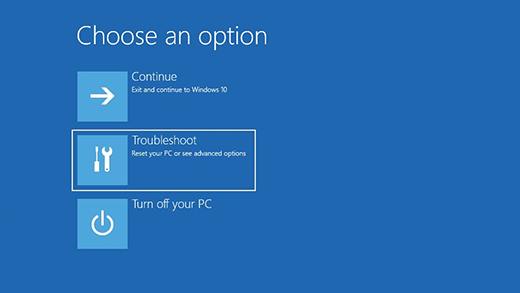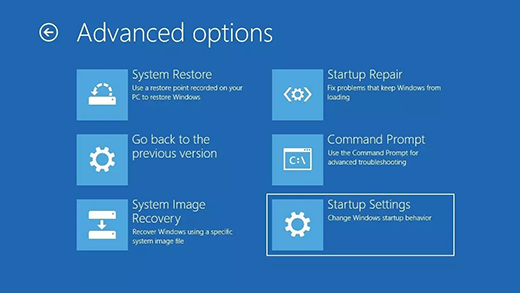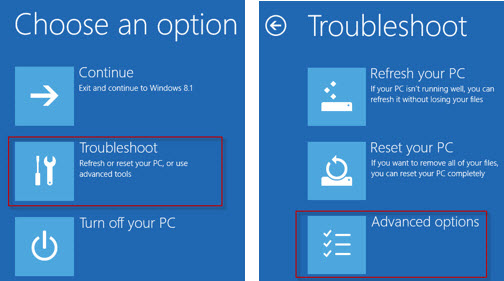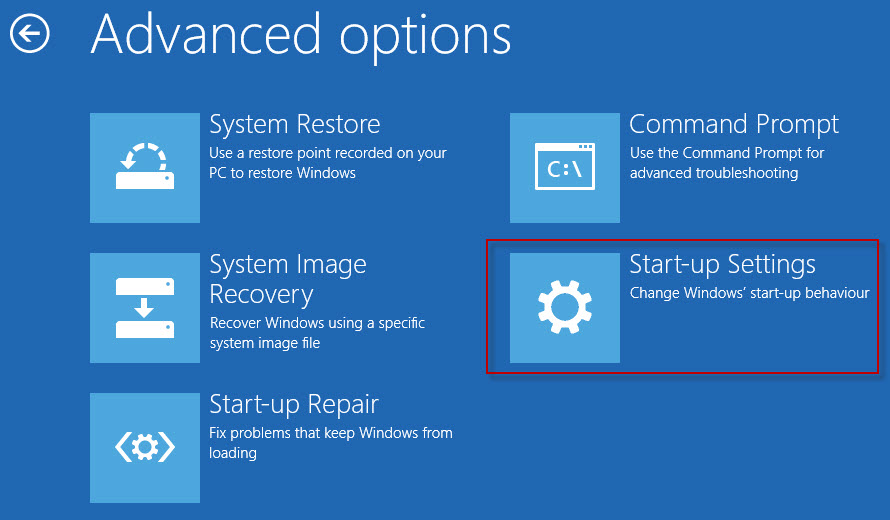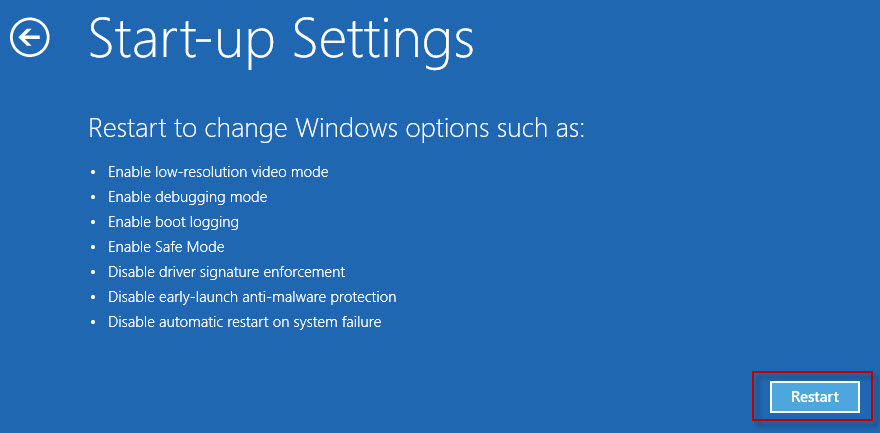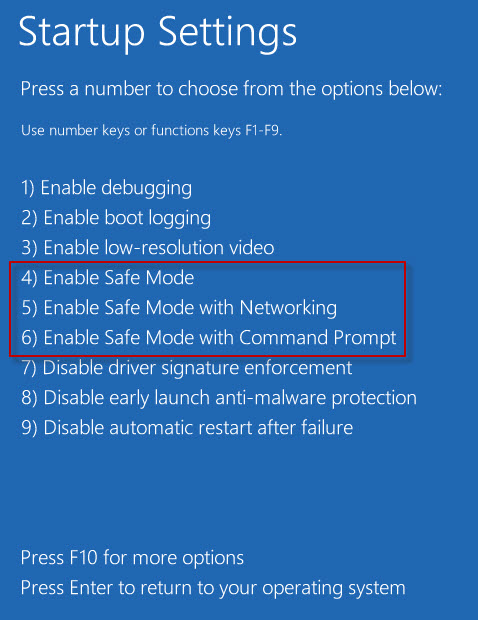How to start windows safe mode windows 10
Start your PC in safe mode in Windows 10
Safe mode starts Windows in a basic state, using a limited set of files and drivers. If a problem doesn’t happen in safe mode, this means that default settings and basic device drivers aren’t causing the issue. Observing Windows in safe mode enables you to narrow down the source of a problem, and can help you troubleshoot problems on your PC.
There are two versions of safe mode: Safe Mode and Safe Mode with Networking. Safe Mode with Networking adds the network drivers and services you’ll need to access the Internet and other computers on your network.
Select from the following sections to find out how to start your PC in safe mode from Settings, from the sign-in screen, or from a black or blank screen.
Under Advanced startup, select Restart now.
After your PC restarts to the Choose an option screen, select Troubleshoot > Advanced options > Startup Settings > Restart. You may be asked to enter your BitLocker recovery key.
After your PC restarts, you’ll see a list of options. Select 4 or press F4 to start your PC in Safe Mode. Or if you’ll need to use the Internet, select 5 or press F5 for Safe Mode with Networking.
When you can’t open Settings to get into safe mode, restart your device from the Windows sign-in screen.
After your PC restarts to the Choose an option screen, select Troubleshoot > Advanced options > Startup Settings > Restart. You may be asked to enter your BitLocker recovery key.
After your PC restarts, you’ll see a list of options. Select 4 or F4 to start your PC in safe mode. Or if you’ll need to use the Internet, select 5 or F5 for Safe Mode with Networking.
Note: If you’ve encrypted your device, you’ll need your BitLocker key to start in safe mode.
Before you enter safe mode, you need to enter the Windows Recovery Environment (winRE). To do this, you will repeatedly turn your device off, then on:
Hold down the power button for 10 seconds to turn off your device.
Press the power button again to turn on your device.
On the first sign that Windows has started (for example, some devices show the manufacturer’s logo when restarting) hold down the power button for 10 seconds to turn off your device.
Press the power button again to turn on your device.
When Windows restarts, hold down the power button for 10 seconds to turn off your device.
Press the power button again to turn on your device.
Allow your device to fully restart. You will enter winRE.
Now that you are in winRE, you will follow these steps to take you to safe mode:
On the Choose an option screen, select Troubleshoot > Advanced options > Startup Settings > Restart.
After your device restarts, you’ll see a list of options. Select option 5 from the list or press F5 for Safe Mode with Networking.
If you need more info on a black or blank screen error, see Troubleshoot black or blank screen errors.
Notes: If you need to exit safe mode, simply restart your device, or:
Press the Windows logo key + R.
Type msconfig in the Open box and then select OK.
Select the Boot tab.
Under Boot options, clear the Safe boot checkbox.
Загрузка компьютера в безопасном режиме в Windows 10
В безопасном режиме запуск Windows выполняется с использованием ограниченного набора файлов и драйверов. Если проблема не возникает в безопасном режиме, это означает, что эти параметры по умолчанию и основные драйверы устройств не приводят к возникновению проблемы. Наблюдение за Windows в безопасном режиме позволяет сузить источник проблемы и устранить неполадки на компьютере.
Существует две версии безопасного режима: Безопасный режим и Безопасный режим с загрузкой сетевых драйверов. В безопасном режиме с поддержкой сети добавляются сетевые драйверы и службы, необходимые для доступа к Интернету и другим компьютерам в сети.
Изучите следующие разделы, чтобы узнать, как запустить компьютер в безопасном режиме в разделе «Параметры», на экране входа в систему, на черном или пустом экране.
Нажмите клавишу с логотипом Windows + I на клавиатуре, чтобы открыть раздел «Параметры». Если это не поможет, нажмите Start кнопку «Пуск» и выберите » Параметры «.
В разделе Особые варианты загрузки выберите элемент Перезагрузить сейчас.
После перезагрузки компьютера на экране Выберите параметр выберите элементы Диагностика > Дополнительные параметры > Параметры загрузки > Перезапуск. Возможно, вам будет предложено ввести ключ восстановления BitLocker.
После перезагрузки компьютера вы увидите список параметров. Нажмите клавиши 4 или F4, чтобы запустить компьютер в безопасном режиме. Если вам будет нужен Интернет, выберите клавиши 5 или F5, чтобы войти в безопасный режим с загрузкой сетевых драйверов.
Если вам не удается открыть «Параметры» для перехода в безопасный режим, перезагрузите устройство на экране входа в Windows.
После перезагрузки компьютера на экране Выберите параметр выберите элементы Диагностика > Дополнительные параметры > Параметры загрузки > Перезапуск. Возможно, вам будет предложено ввести ключ восстановления BitLocker.
После перезагрузки компьютера вы увидите список параметров. Нажмите клавиши 4 или F4, чтобы запустить компьютер в безопасном режиме. Или, если вам нужно использовать Интернет, выберите 5 или F5 для безопасного режима с помощью сети.
Примечание: Если вы зашифровали свое устройство, для запуска в безопасном режиме вам потребуется ключ BitLocker.
Перед входом в безопасный режим необходимо войти в среду восстановления Windows (winRE). Для этого вы будете периодически включать свое устройство, а затем:
Нажмите кнопку питания на устройстве и удерживайте ее нажатой в течение 10 секунд, чтобы выключить устройство.
Снова нажмите кнопку питания, чтобы включить устройство.
После появления первого признака запуска Windows (например, на некоторых устройствах отображается логотип производителя при перезапуске) удерживайте нажатой кнопку питания в течение 10 секунд, чтобы отключить устройство.
Снова нажмите кнопку питания, чтобы включить устройство.
После перезагрузки Windows удерживайте кнопку питания на устройстве нажатой в течение 10 секунд, чтобы выключить устройство.
Снова нажмите кнопку питания, чтобы включить устройство.
Разрешите полностью перезапустить устройство. Будет активирована среда восстановления Windows.
В среде winRE выполните следующие действия, чтобы перейти в безопасный режим.
На экране Выбор действия выберите Диагностика > Дополнительные параметры > Параметры загрузки > Перезагрузить.
После перезагрузки устройства вы увидите список параметров. Выберите параметр 5 в списке или нажмите клавишу F5, чтобы запустить безопасный режим с подключением к сети.
Если вам нужны дополнительные сведения о черном или пустом экране, изучите раздел Устранение ошибок типа «черный» или «пустой» экран.
Примечания: Если вам необходимо выйти из безопасного режима, просто перезагрузите устройство или выполните следующие действия.
Нажмите клавишу с логотипом Windows+ R.
Введите msconfig в поле Открыть, а затем нажмите кнопку ОК.
Откройте вкладку Загрузка.
В разделе Параметры загрузки снимите флажок Безопасный режим.
How to Start Windows 10 in Safe Mode
Is Windows misbehaving? One diagnostic technique you can try is Safe Mode to see if you can narrow down the cause of the trouble. Here’s how to use Safe Mode to diagnose a PC problem.
Is your Windows machine freezing, crashing, or just not up to snuff? It could be a bad application, a quirky driver, or even a faulty piece of hardware.
One way to get to the bottom of the problem in a Windows machine is to start the operating system in Safe Mode, which launches Windows in a clean, pristine, barebones fashion by preventing certain drivers and other items from loading. If Windows works happily in Safe Mode, it typically means the fault lies within a certain driver, service, or other plugin that would otherwise load automatically.
The steps offered here assume that you can at least boot into Windows and access the Safe Mode feature.
How to Start Windows 10 in Safe Mode
In the search field at the bottom of your screen, type the command msconfig. At the top of the search results, click System Configuration or just press Enter.
Alternatively, click the Start button, scroll down the apps list and open the folder for Windows Administrative Tools. Click the shortcut for System Configuration.
In the System Configuration window that appears, your current setting is most likely Normal Startup or Selective Startup. Click the second option for Diagnostic startup, which loads only basic drivers and services.
Note that the drivers and services for audio, networking, and certain other functions won’t load with this option, so you won’t be able to use or test those features. Click OK. At the System Configuration message, click the Restart button to immediately reboot your computer.
Safe Boot
After your PC restarts, sign back into Windows and try to reproduce the problem you were experiencing. Whether or not the trouble persists, you’ll still need to perform further testing to narrow it down. Open the System Configuration tool again. Click the Boot tab. Select the checkbox for Safe boot.
Under Safe Boot are four different options: Minimal, Alternate shell, Active Directory Repair, and Network.
Among these, Minimal and Network are probably the most useful options for the average person troubleshooting a problem. Select Minimal, reboot, and try to reproduce the problem. Do the same with Network.
If the problem goes away, you can always open System Configuration again and try booting into Normal mode and see if the trouble is really gone. Otherwise, some of the other options in the Boot section of System Configuration can be helpful. No GUI, Boot log, Base video, and OS boot information can be used with Diagnostic startup or Safe boot. You can enable any or all of these four options.
No GUI Boot
No GUI boot simply disables the animated dots during startup, so it’s not particularly useful for troubleshooting.
Boot Log
Boot log generates a special text file that shows you which drivers were loaded and not loaded during startup, so this is a helpful option for troubleshooting a problem. Enable Boot log and restart your computer. Sign into Windows. Launch File Explorer and open the following file: C:\Windows\ntbtlog.txt. Check the file for the status on each driver.
Base Video
Base video loads the drivers for standard VGA graphics instead of the drivers for your specific video card or hardware. As such, this option is a useful way to troubleshoot problems with your graphic display.
OS Boot Information
OS boot information displays a list of drivers and other information as your computer starts up. But it works only in Windows 7, not Windows 10 or 8.1.
Reboot the PC with each option checked one by one and see if the problem disappears.
Disable Suspected Troublemakers
Beyond using the built-in Safe Mode options, you can check to see which services and startup programs are loading and disable any you believe are causing trouble. At the System Configuration window, click the Services tab. You’ll likely see a lot of services here, many of which are difficult to decipher. So you’re best leaving most of them alone. But if you spot an easily identifiable service listed as running, disabling it is another option available for troubleshooting a problem.
For help on how to identify and disable startup programs, check out how to stop Windows 10 apps from launching at startup.
At this point, if you can narrow down the problem to a specific driver or service, you can run a Google or Bing search for that item to see if other people are bumping into trouble with it and learn how they may have resolved the issue.
Quick Boot Into Safe Mode in Windows 10 (or 8.1)
If you’re running Windows 10 or 8.1, you have other options for booting into Safe Mode. In Windows 10, click the Start button > Settings > Update & security > Recovery. In the Advanced Startup section, click the button to Restart now.
If you still have Windows 8.1, launch the Charms bar, then click the Settings charm > Change PC Settings > Update & recovery > Recovery. In the Advanced Startup section, click the button to Restart now.
From this point in both Windows 10 and 8.1, your screen will display a blue menu. Choose Troubleshoot > Advanced options > Startup Settings > Restart. At the next Startup Settings screen, press one of the keys from 1 through 9 to select a specific startup type—for example, 1 to Enable debugging, 4 to Enable Safe Mode, or 5 to Enable Safe Mode with Networking. Then click the Restart button.
Your PC reboots with the startup type you selected. You can now once again try to reproduce the problem you’ve been experiencing in Windows to see if you can narrow it down and hopefully resolve it.
How to start or boot Windows 10 in Safe Mode
Windows 10 Safe Mode loads the operating system with a minimal set of system files and device drivers – just enough to boot the Windows OS. In Safe Mode, the startup programs, add-ons, etc.settings, do not run. We usually boot into Safe Mode, when we need to troubleshoot issues. This post will show you how to enable and start or boot Windows 10 in Safe Mode. There may be other ways, but we will cover only 2 of the most convenient ways.
Boot Windows 10 in Safe Mode
Let us take a look at them in detail.
1] Using Advanced Startup Options
The easiest way to boot Windows 10 into Safe Mode, would be to press Shift and then click on Restart. This will reboot your Windows 10 computer into Advanced Startup Options.
Alternatively, open the Settings app > Update & Security > Recovery. Under Advanced startup, click on Restart now.
When you follow any of the two methods mentioned, your Windows 10 computer will restart, and you will see the following screen.
Click on Troubleshoot to proceed.
Now follow the steps laid down in Advanced Startup options in Windows 10. It will take you through the entire process starting with – Troubleshoot > Advanced Options > Startup Settings > Restart > Press No 4 key.
If you have followed the procedure correctly, you will finally reach Startup Settings screen, from where you will be able to enable Safe Mode.
Press the ‘4’ key, and your computer will restart and enter Safe Mode. To reboot in Safe Mode with Networking, press ‘5’ key. To reboot in Safe Mode with Command Prompt, press the ‘6’ key.
You will see a black desktop with a Safe Mode watermark in the bottom left and right sides.
Read: How to Enable F8 Key to Boot into Safe Mode on Windows 10
2] Using System Configuration Utility
The other simple way, of course, is by using the built-in System Configuration Utility. From the Win+X Menu, open Run box, type msconfig and hit Enter.
Under the Boot tab, check the Safe boot and Minimal options. Click Apply/OK and exit. On a restart, your computer will enter Safe Mode directly.
You can now work in the Safe Mode.
Before you exit, remember to open msconfig and uncheck the Safe Boot check box, click Apply/OK and then on Restart, so that on reboot, your computer will not again boot in safe mode – but instead will boot to your desktop.
How do I start Windows 10 in Safe Mode?
To access the Boot Manager of your system, please press the key combination Ctrl + F8 during the startup process. Select the desired Safe Mode to start your PC.
Note
With computers that start quickly or which are equipped with a fast SSD, it may be difficult to hit Ctrl + F8 at exactly the right time to catch the dialog. Therefore it might take several attempts to access the Boot Manager this way.
Alternatively, Safe Mode can also be launched directly from Windows or via the Windows System Configuration Utility described in the following video or in the text below.
Start Safe Mode directly from Windows
Click the Windows-button → Power.
Hold down the shift key and click Restart.
Click the option Troubleshoot and then Advanced options.
Go to “Advanced options” and click Start-up Settings.
Under “Start-up Settings” click Restart.
Various boot options are displayed.
The relevant options for booting in Safe Mode are numbers, 4,5, or 6.
Select an option by pressing one of the numbers or function keys F4, F5 or F6
4) Enable Safe Mode
In this mode, the operating system is started with the bare minimum of installed drivers and only the main Windows functions are used.
5) Enable Safe Mode with Networking
In this mode, the network drivers are also started.
6) Enable Safe Mode with Command Prompt
In this mode, the operating system is started in text mode. This mode requires knowledge of computer commands and is, therefore, more suitable for professional users.
Windows 10 starts in Safe Mode.
Note
You can tell you’re in Safe Mode as the words Safe Mode are displayed in the four corners of the screen.
